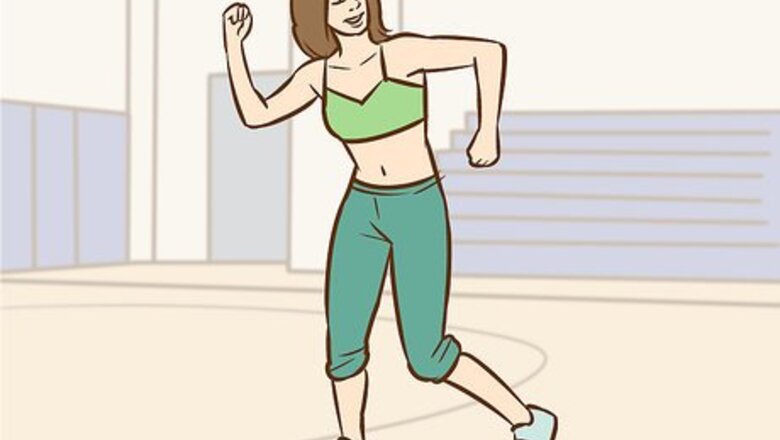
views
Learning Some Basic Moves
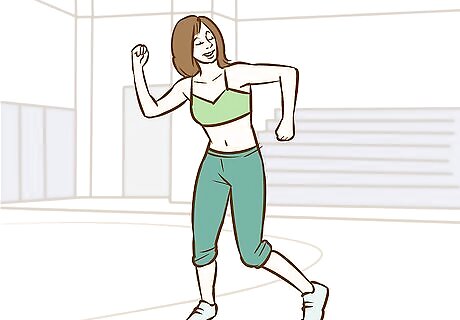
Learn the strike. Before forming a dance routine, spend some time learning a few basic moves. The dance move "the strike" is a fun dance move that can help with any routine. Here's how to do it: Stand with your feet hip width apart, toes straight ahead. Hold your arms in front of your chest, right over left, with your hands forming fists. Hop on your right foot while bending and turning your left heel on the floor. Bend both arms 90 degrees. Turn your right hand to the ceiling, palm facing forward. At the same time, turn your left arm away from you, palm facing down. Hop again and return your feet and arms to their original positions. Repeat the process of bending and turning again, this time leading with your left foot.
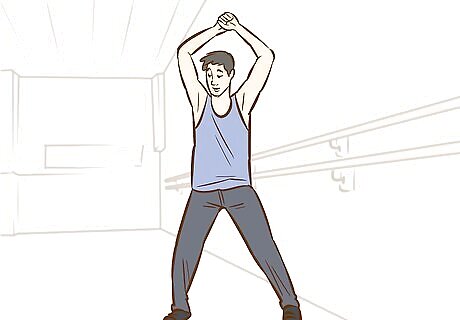
Practice happy feet. Happy feet is a simple move that will help you get into the rhythm of a dance routine. This can be a fun, foundational move for any dance routine. Here's how you do it: Stand with your feet together and your arms bent to the chest level. Grasp your left wrist with your right hand. Step your right foot to the side and lean into it while letting go of your wrist. Pull your elbows behind your body, keeping them level with your shoulder. Bend them at a 90-degree angle. Return your feet to the original position. Step your left foot out while raising your arms above your head back to starting position. Repeat the process, alternating your left and right sides.
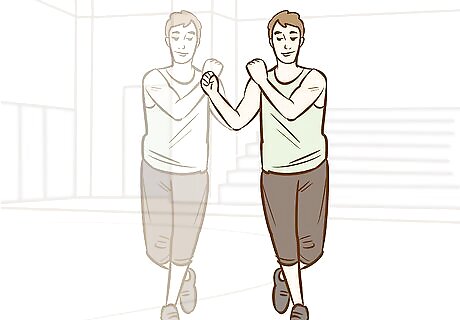
Do the hopscotch. The hopscotch is a fun, active dance move. Learning it can help you form your own dance routine. Here's what to do: Stand with your feet together. Bend both arms in towards your body. Cross your right foot in front of your left foot while pulling your arms to the right. Cross your right foot behind your left foot and swing your arms to the left. Bring your feet together and hop 3 times in a small circle. Repeat the process using your left foot instead.
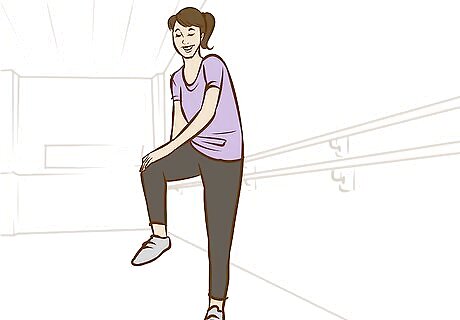
Try the slap. The slap can be a fun, energetic dance move to add to a routine. Spend some time practicing this move when forming your own dance routine. This is how you do it: Stand with your legs about 2 feet (61 cm) apart. Hop on your left foot while bringing your right knee up to your hip. Brush the top of your right knee with your left hand. Think of this like brushing some dirt off of your knees. Return to the original position. Repeat the process with your left knee and right hand.

Practice the two-step. The two-step is a very basic dance move that can help you get into the rhythm of the music. Practicing the two-step can help you form a dance routine. This is what you need to do: Move your right foot to the right, then move your left foot to meet it. Repeat the process with your left foot. Keep in time to the music. If you want to add a little something to the move, reach forward with your heel while leaning back slightly.
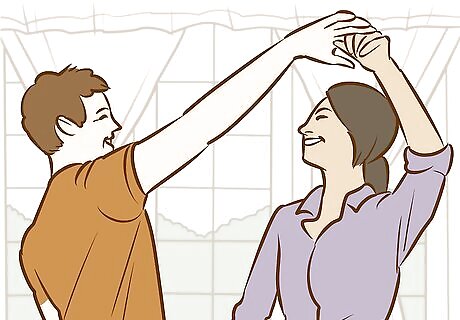
Figure out what to do with your arms. People are often confused as to how to move their arms when dancing. There are a variety of basic dance move options regarding moving your arms. Move 1 arm up and the other arm down. You can snap your fingers as you move your arms, if you want. Try the shoulder roll. This is simply rolling 1 shoulder at a time, moving with the beat of the music.
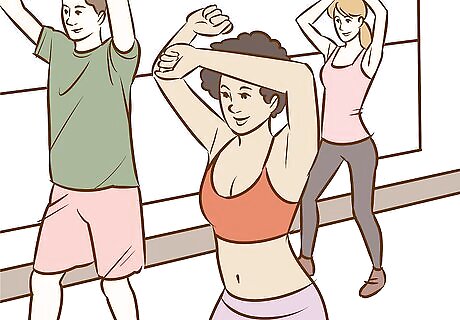
Explore other moves. There are a very large amount of dance moves and styles. If you're interested in forming a dance routine, explore. Take a dance class or two. Watch people at a club or look up music videos online. Have fun and be creative. Your dance routine should be an expression of your personal taste and style.
Forming a Ballet Routine
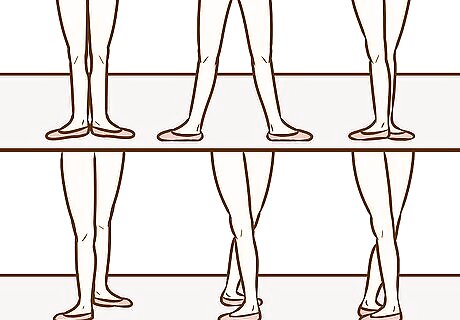
Learn foot positions. Ballet comes with a variety of positions for your feet, broken down into five different categories. If you're interested in doing a ballet inspired routine, familiarize yourself with the different foot positions. Each position involves rotating the legs at a 90-degree angle from the hip joint. First position: stand with your legs together and your toes pointed away from your body. Try to form a straight line with your feet. Second position: start with first position, then spread your legs apart slightly, keeping your toes pointed outward. Third position: keep your arms at your side, but raise one arm up over your head. Fourth position: stand with your legs together and feet crossed. Point your toes inward, so that they face each other. Fifth position: start with fourth position, then push your feet slightly closer together.
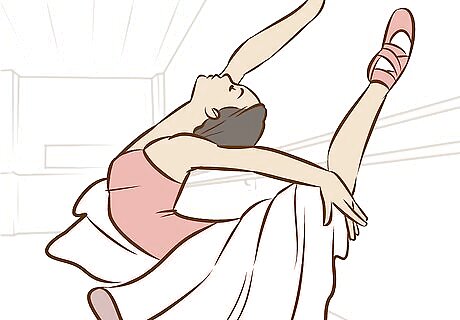
Practice arm movements. Just as there are different positions for your legs in ballet, there are also different positions for your feet. Spend some time practicing the different placements of your arms if you're interested in doing a ballet routine. First position: bend your arms slightly at the elbow and hold them out in front of your body. Second position: stretch your arms out on either side of your body. Fourth position: keep 1 arm over your head. Bend the other arm inward, as you did in first position. Fifth position: raise both your arms over your head. Keep your elbows slightly bent.
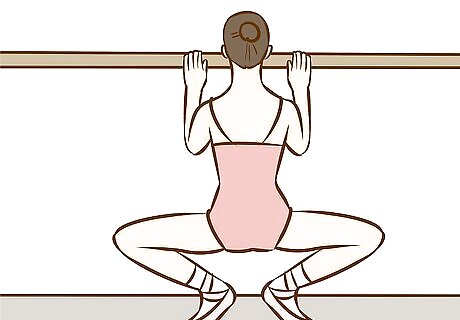
Study how to plie. A plie (plee-ay) is a basic ballet move. It simply means "to bend." Bend your knees, with your feet pointing away from your body. Try to get your knees to bend until they're directly above your toes.
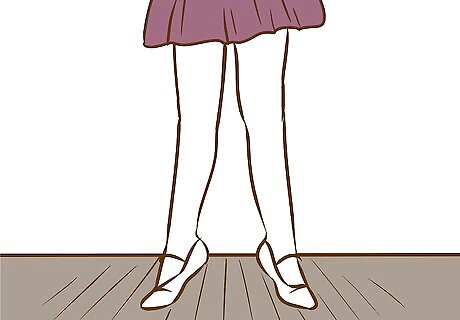
Practice releve. Releve (ruh-lee-vey) is a ballet move in which you rise slightly. It can be done using one or both feet. Push your feet together while keeping your knees straight. Lift your heels into the air, transferring your body weight onto the balls of your feet. You should not attempt to stand on the tips your toes without proper training as well as shoes.
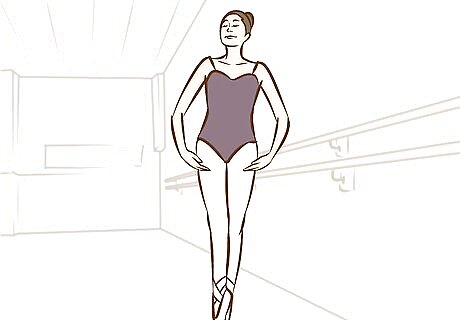
Try a saute. A saute (soh-tay) is a basic ballet jump in which you use both feet at the same time. Begin with a plie and then use your feet as if you were going to perform a releve. In doing so, jump into the air. Straighten your legs as you jump and then land on both feet.
Trying Ballroom Dance
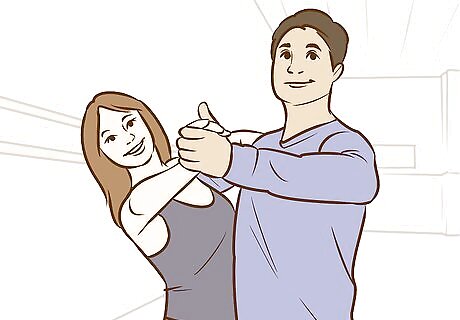
Keep your posture proper. If you're going to attempt a ballroom dancing routine, your posture is of utmost importance. Before attempting any ballroom steps, work on developing proper posture. Here are some tips for you: Keep your chin parallel to the floor. Hold your head upright. Lift your chest in order to lengthen your spine. Stand on both feet. Keep your weight placed just slightly forward of your body's center.

Learn the rock step. The rock step is a basic ballroom move. This can be fun to use if you're creating your own dance routine. The rhythm used in the rock step is "one and two, three and four." You'll have to think of these words while dancing to keep your rhythm steady. Stand with your feet together. Cross your right foot about 12 inches (30 cm) behind the left and set it down, form a 45-degree angle. Transfer your weight to the ball of your back foot, counting "one." Immediately shift your weight back to your front foot, counting "and." Return your feet to starting position, counting "two." Three and four follow the exact same steps. You simply reverse which foot goes in front and which foot goes in back.

Try the grapevine. The grapevine is a simple step for a fast-paced ballroom dance routine. One foot steps directly to the side. The other foot crosses that foot. You repeat this process continually, altering feet.

Use a basic triple step. A triple step is a basic ballroom dance move. You could use this in a ballroom routine or just a dance routine in general. It's a bit faster and less balanced than the rock step, so it may take some time to perfect. Here's what you should do: Like the rock step, the triple step is counted "one and two, three and four." However, "one and" and "three and" are counted quicker than the other steps. Start with your feet together, then step forward with your right foot, counting "one." Quickly shift your weight to your left foot while counting "and." Shift back to the right foot, counting "two." Use the count of 3 to move your left foot forward. For the remainder of the steps, repeat the above motion but use your left foot to step forward instead.
Learning Salsa Moves
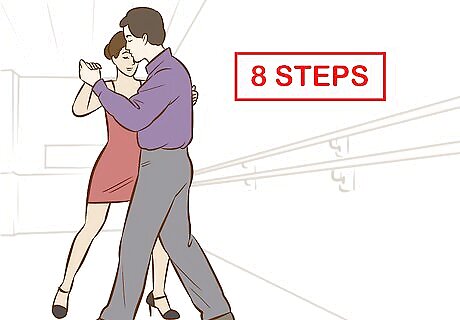
Learn to count steps. In salsa dancing, time is kept in 8 counts. This means steps are performed over 8 beats of music. After 8 beats, you return to your original position and prepare to engage in the steps again. For the leader, try: hold the beat for the first step, step forward with your left foot and rock back with the right. Step back with your left foot and hold the beat. Step back with your right foot, rock forward with your left, then step forward with your right. For the follower: hold the beat, then step back with your right foot. Rock forward on your left foot and step back with the right. Hold the beat, then step forward with your left foot, rock back on your right, then step back with your left foot.
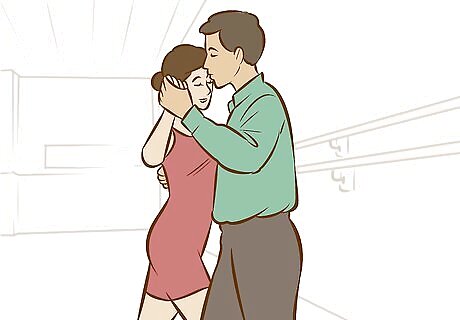
Practice leading and following. In salsa dancing, there is one leader and one follower. You'll need a partner to do a salsa dance routine. Establish who leads and who follows between yourself and your partner. The leader usually establishes the moves during the routine, giving the follower small signals via gentle tugs and pushes in the right direction. The job of the follower is to move his or her feet more or less in the opposite direction of the follower. Traditionally, a man leads and a woman follows but you of course do not have to follow this rule in your own routine.
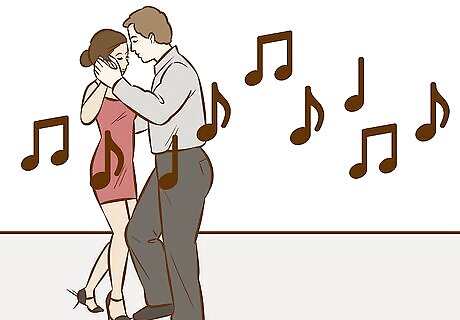
Learn to dance to music. As salsa follows an 8-step beat, you need to learn to rely on dancing to music. It would be very hard to do a salsa routine without a song accompanying your dance. Spend some time listening carefully to music, trying to hear the beat in the back of a song. Count 1, 2, 3, 4, 5, 6, 7, and 8 and follow this beat as you go through the moves of your salsa routine. Keep in mind, when choosing music, you'll need to pick something with a clear, distinct rhythm for your routine to work.
Choosing Other Types of Dance

Consider a hip-hop routine. If you want to make your own dance routine, spend some time exploring different dance types. One fun type of dance his hip hop. Look into forming a hip-hop dance routine. Here are some basics to get you started: Dubstep is a type of music that involves percussion beats and bass patterns. Watch YouTube and other tutorial videos that show you how to "pop" to dubstep. Breakdancing, involves full use of the body and gets you close to the floor. Online videos are a great starting point, but you'll learn the most from practicing it physically. Attitude is everything. Commit to each move and have confidence. Even if you havn't mastered a move yet, people won't notice if you do it with confidence.
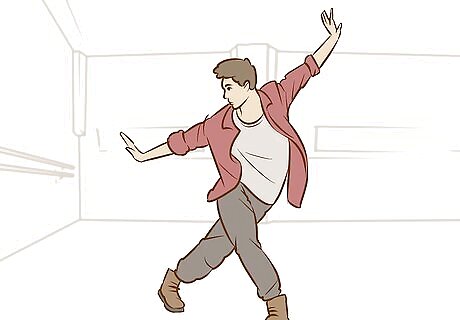
Look into modern dance. Modern dance can be another fun type of dance to incorporate into your dance routine. If you're concerned about coordination, modern dance can be fun as it encourages free movement. Here are some ideas: Freestyle to modern dance routines by moving to a theme. For example, you could sway your body in wave-like motions to reflect the ocean in a tropical song. Make a modern dance routine with a group. Coordinate moves together or freestyle moves 1 at a time in response to a central theme or idea.
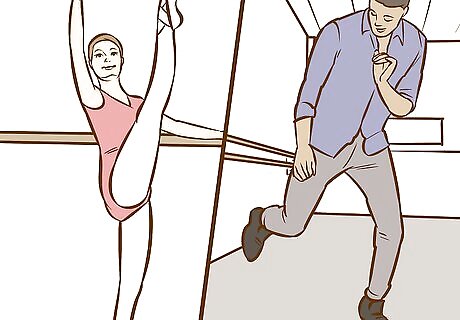
Look into dance classes. There are many different types of dances you can use in a personal dance routine. Depending on your personal interests, look into different types of dance classes. Here are the basics: If you're interested in classical dance with a partner, look into ballroom dancing. You'll learn classic routines like the waltz, tango, cha-cha, rumba, and more. Jazz classes teach you dances like the Charleston, the swing, and other fun routines. Latin dances, like the salsa or flamenco, can also be fun. They are energetic and often require partners. If you like rules and routine, tap dancing or ballet might appeal to you. They do require a certain level of mastery, however. While you can learn basic steps from an online video, physical classes are much better. One-on-one instructions from a professional can really help you learn.
Putting It Together
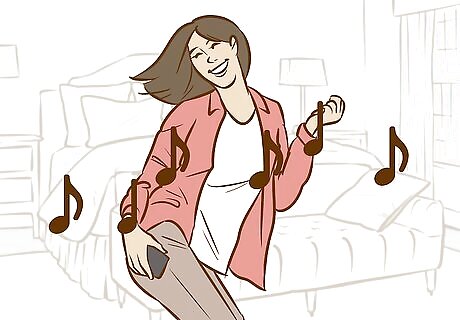
Pick a song. If you're forming a dance routine, you'll need to choose a musical accompaniment. Choose a song that you like, first of all, as you'll dance better if you're enjoying yourself. You're more likely to have fun dancing to a song you love. Also, keep in mind the style of the music and how it matches the routine you're creating. For example: If you want to do a graceful, ballroom style routine choose a slow song. If you want a fun, peppy routine look into dance music and club music.
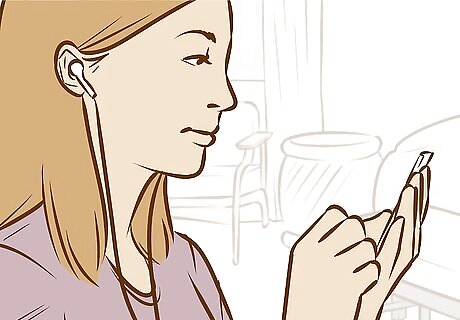
Learn through observation. Dancing is like any other practice. You can learn a lot through simple observation. If you want to create a dance routine, spend a lot of time exploring dance routines online. Browse YouTube, or other video sites, for dance routines. Type the name of the dance into the search box, or type "dance routine." Consider attending a dance class just to observe. Talk to a local dance instructor and see if they would let you come watch a class. Watch for events in your town or area that involve dancing. If affordable for you, consider buying tickets to events that involve dancing. This can help you find inspiration.
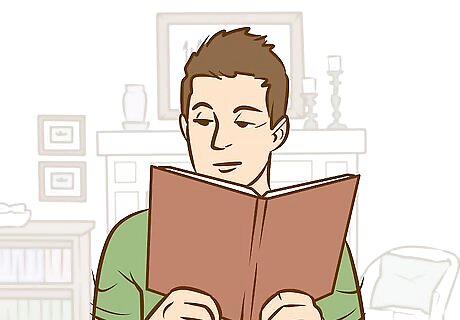
Study dancing. Dancing is an art and people study for years to dance properly. Even if you're just forming a dance routine for fun, studying dancing can help. Go to your local library or bookstore and find books about dancing and choreography.
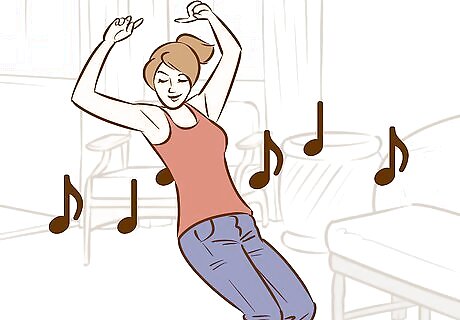
Put your moves together in a way that feels fun for you. After getting inspired and studying a variety of dance styles, put it all together. Using the moves you've learned, altered, or created, put together a fun routine for yourself. Remember to pay attention to the beat and style of the music. It might be a good idea to record yourself dancing and watch the recording. This way, you can see where your routine might need improvement.
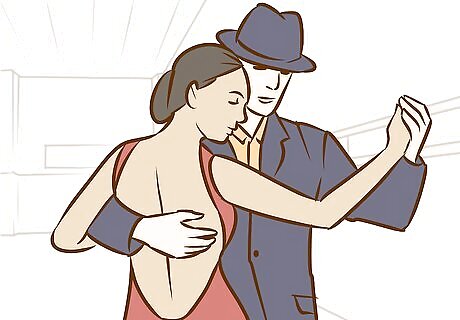
Practice consistently. Dancing requires a certain level of mastery that can only be achieved through practice. Try to make time each day to dance. Work practicing your routine into your schedule as you would brushing your teeth or eating dinner. Set aside an hour each day to work on your routine.












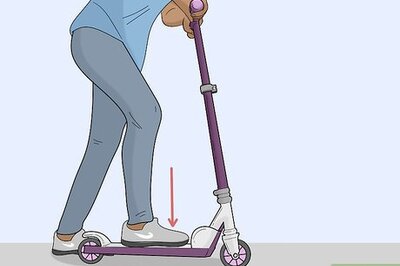

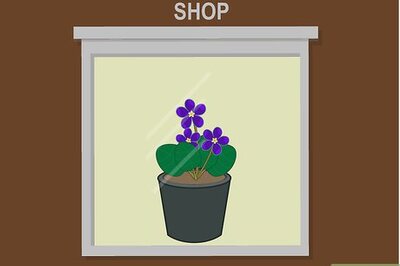



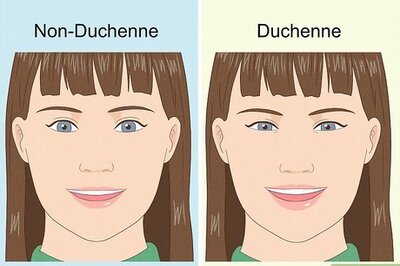
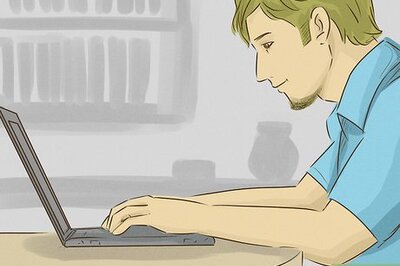
Comments
0 comment